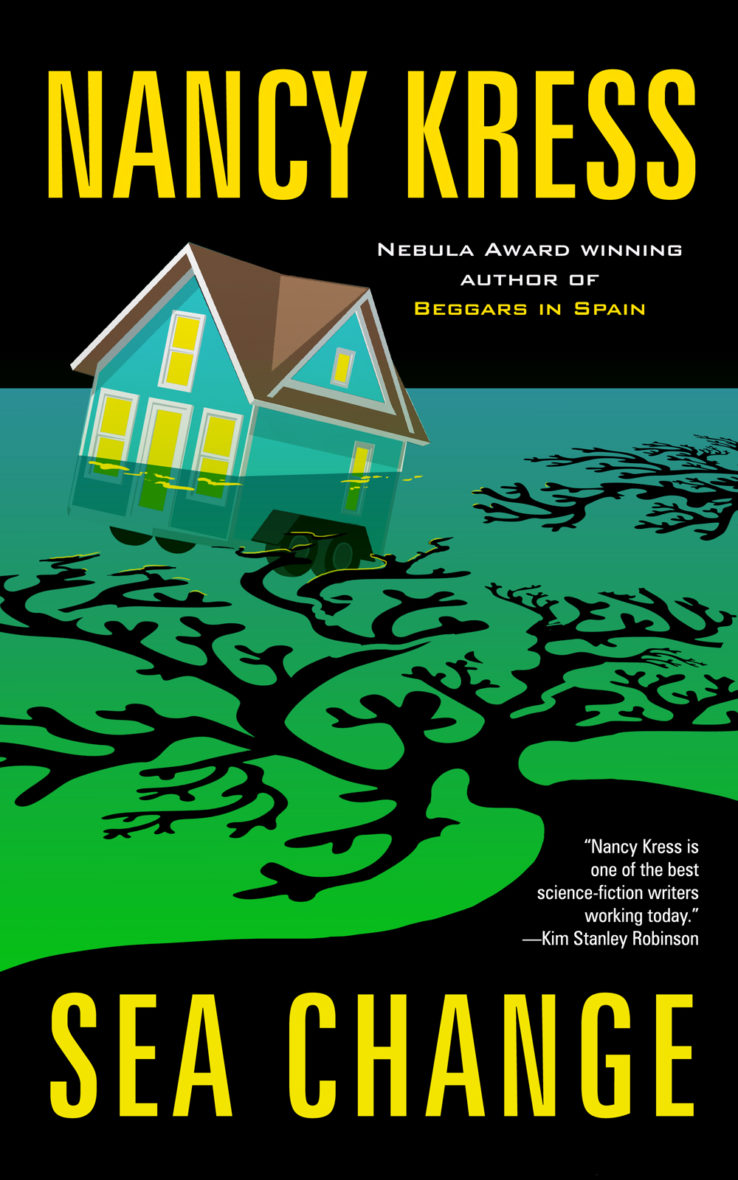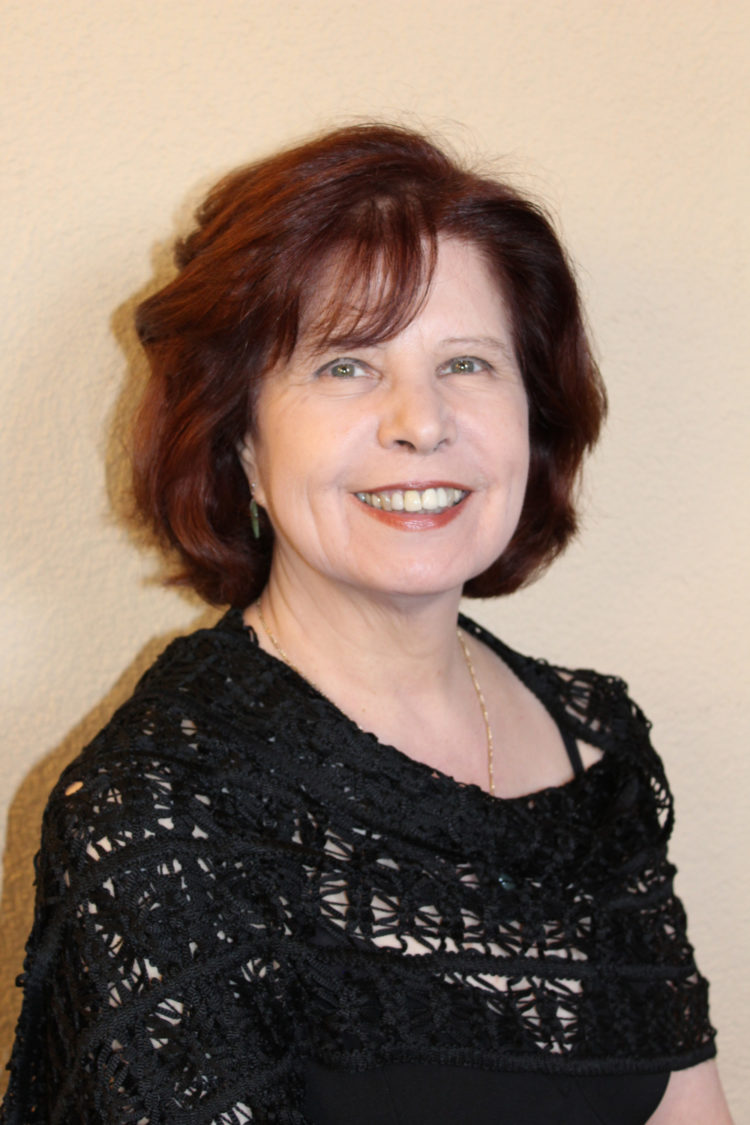There’s a great deal to think about in the strongly recommended SEA CHANGE by Nancy Kress

BLUE BOOK BALLOON praises Nancy Kress’ SEA CHANGE.
It’s a lot to pack into 192 pages and that inevitably means there are places where the narration has to fill us in on those legal niceties, or a decade of economic turmoil, or the highs and lows of Renata’s and Jake’s relationship. Yet the narrative drive and the interest never flag, and there’s a genuine sense of jeopardy here right till the last page – as well as a mystery concerning Renata’s cell in the Org.
The book also has some sharp writing and insights. ‘Minutes nailed by’, for example, or ‘Childhood doesn’t really end until both your parents die’ or ‘It isn’t the past that creates the future. It’s how you interpret the past.’ Or – and getting his back to the point – ‘Anyone who would trust online celebrity sites would believe in leprechauns, elves and the wholesomeness of high-fructose corn syrup’.
All in all a plausible future, credible, relatable characters and a great deal to think about in this one. I’d strongly recommend.
Kress contributes blog posts to both John Scalzi’s WHATEVER Big Idea and Mary Robinette Kowal’s My Favorite Bit.
SEA CHANGE happens to Renata Black. As I age, my protagonists get older (eventually I expect to be writing about octogenarians), partly because I get tired of brash, young, badass heroines. So Renata is a middle-aged woman in a near-future Seattle. Her life is not going as expected. She is a mother, a wife in a difficult marriage, an activist in a secret organization. An idealist, but one who recognizes that realizing ideals happens slowly, with effort, imperfectly, and sometimes at great personal cost.
John Scalzi’s WHATEVER Big Idea
SEA CHANGE also happens to Jake, Renata’s actor husband. To their chess-loving son, Ian. To thirteen-year-old Lisa, a member of the Quinalt Nation. To Kyle, an ex-NFL wide receiver turned teen counselor, who has the unenviable task of trying to hold together a revolutionary cell of talented, utopian-minded misfits.
Finally, the novella is about other things as well as GMOs. Ocean blobs. Legal jurisdiction fights. Love and loss (if I hadn’t thought of it too late, I would have called my story Sea Change: A Love Story). The Quinalt Peninsula northwest of Seattle, which contains the world’s only temperate rainforest: wild, coastal, and beautiful.

Why is this my favorite bit? After all, the novella is about more serious stuff (ocean toxins, genetically modified crops), more dramatic stuff (an underground resistance organization), more emotional stuff (I wish now that I’d titled the novella Sea Change: A Love Story, but I didn’t think of it in time). But this lost house is my favorite bit. Maybe because:
• I am a lousy driver and would greatly enjoy anything that would move itself—car, truck, house.
• I really enjoyed fitting in a lot of different reactions to this stalled house: amusement, frustration, anger, schadenfreude.
• It gave me a chance to write “an edifice with confused GPS.” Not a phrase I’ve ever written before.
• There are several things in this opening that will prove significant later on in the story but don’t seem so now, which allows for that authorial chuckle of suppressed glee: Guess what I’m going to do with this later!
• The setting was copied from a real-life one in the Bahamas, a second-story balcony café from which my husband and I, sipping exotic touristy drinks with umbrellas in them, watched an completely unexpected parade proceed down the street. (That one did not get stalled). A good memory.
The larger point here—if there is one—is that what matters to the writer may not be the same thing that matters to the reader—at least, not at the beginning of the story. Hopefully, those two will have converged by the story’s end. For SEA CHANGE, you will have to decide for yourself if I made that happen.
Mary Robinette Kowal’s My Favorite Bit
